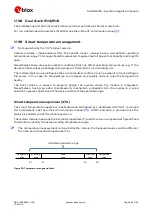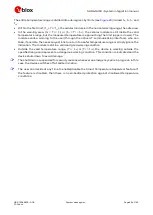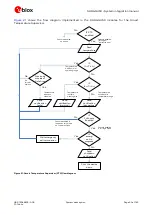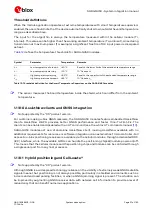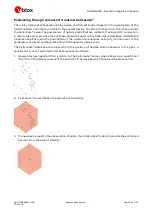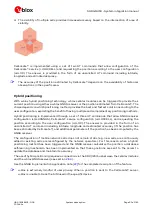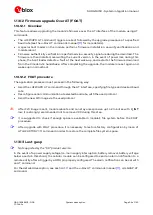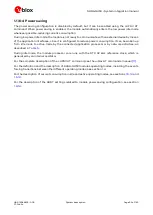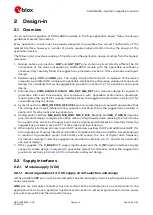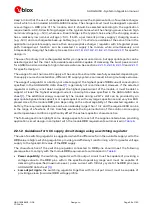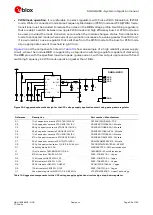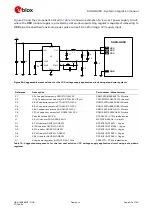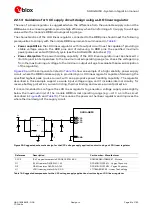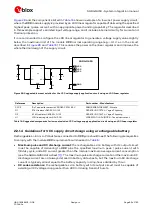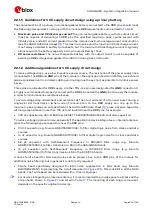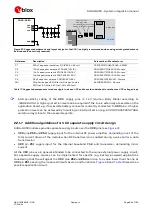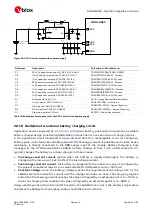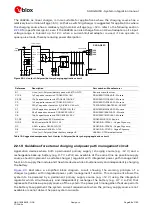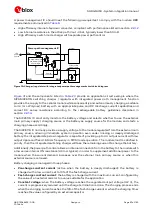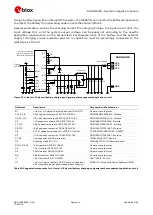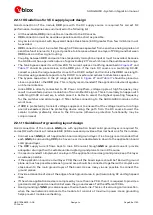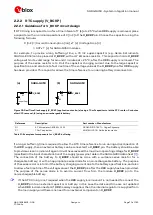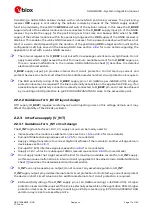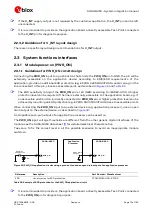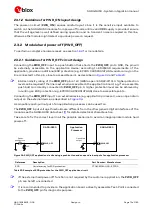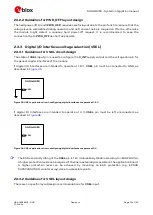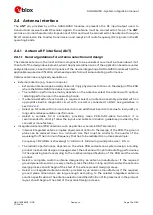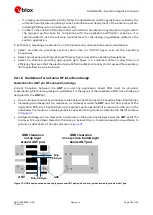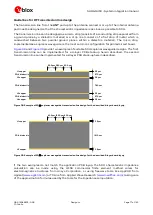
SARA-G450 - System integration manual
UBX-18046432 - R08
Design-in
Page 62 of 143
C1-Public
and the components listed in
show an example of a low cost power supply circuit,
where the VCC module supply is provided by an LDO linear regulator capable of delivering the specified
highest peak / pulse current, with an appropriate power handling capability. The regulator described
in this example supports a limited input voltage range, and it includes internal circuitry for current and
thermal protection.
It is recommended to configure the LDO linear regulator to generate a voltage supply value slightly
below the maximum limit of the module VCC normal operating range (e.g. ~4.1 V as in the circuit
described in
). This reduces the power on the linear regulator and improves the
whole thermal design of the supply circuit.
5V
C1
IN
OUT
ADJ
GND
1
2
4
5
3
C2
R1
R2
U1
EN
SARA-G450
52
VCC
53
VCC
51
VCC
GND
Figure 26: Suggested low cost solution for the VCC voltage supply application circuit using an LDO linear regulator
Reference
Description
Part number - Manufacturer
C1, C2
10
µ
F capacitor ceramic X5R 0603 20% 6.3 V
GRM188R60J106ME47 - Murata
R1
27 k
resistor 0402 5% 0.1 W
RC0402JR-0727KL - Yageo Phycomp
R2
4.7 k
resistor 0402 5% 0.1 W
RC0402JR-074K7L - Yageo Phycomp
U1
LDO linear regulator ADJ 3.0 A
LP38501ATJ-ADJ/NOPB - Texas Instrument
Table 16: Suggested components for low cost solution VCC voltage supply application circuit using an LDO linear regulator
2.2.1.4
Guidelines for VCC supply circuit design using a rechargeable battery
Rechargeable Li-Ion or Li-Pol batteries connected to VCC pins should meet the following prerequisites
to comply with the module VCC requirements summarized in
Maximum pulse and DC discharge current: the rechargeable Li-Ion battery with its output circuit
must be capable of delivering to VCC pins the specified maximum peak / pulse current with
1/8 duty cycle, and a DC current greater than the module maximum average current consumption
(see the SARA-G450 data sheet
). The maximum pulse discharge current and the maximum DC
discharge current are not always detailed in battery data sheets, but the maximum DC discharge
current is typically almost equal to the battery capacity in Amp-hours divided by 1 hour.
DC series resistance: the rechargeable Li-Ion battery with its output circuit must be capable of
avoiding a VCC voltage drop greater than 400 mV during transmit bursts.

